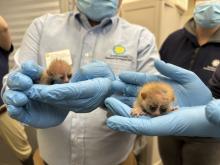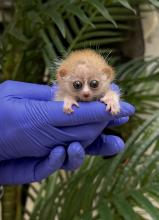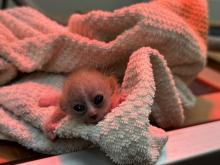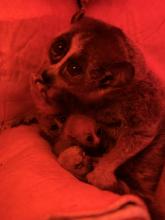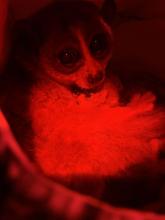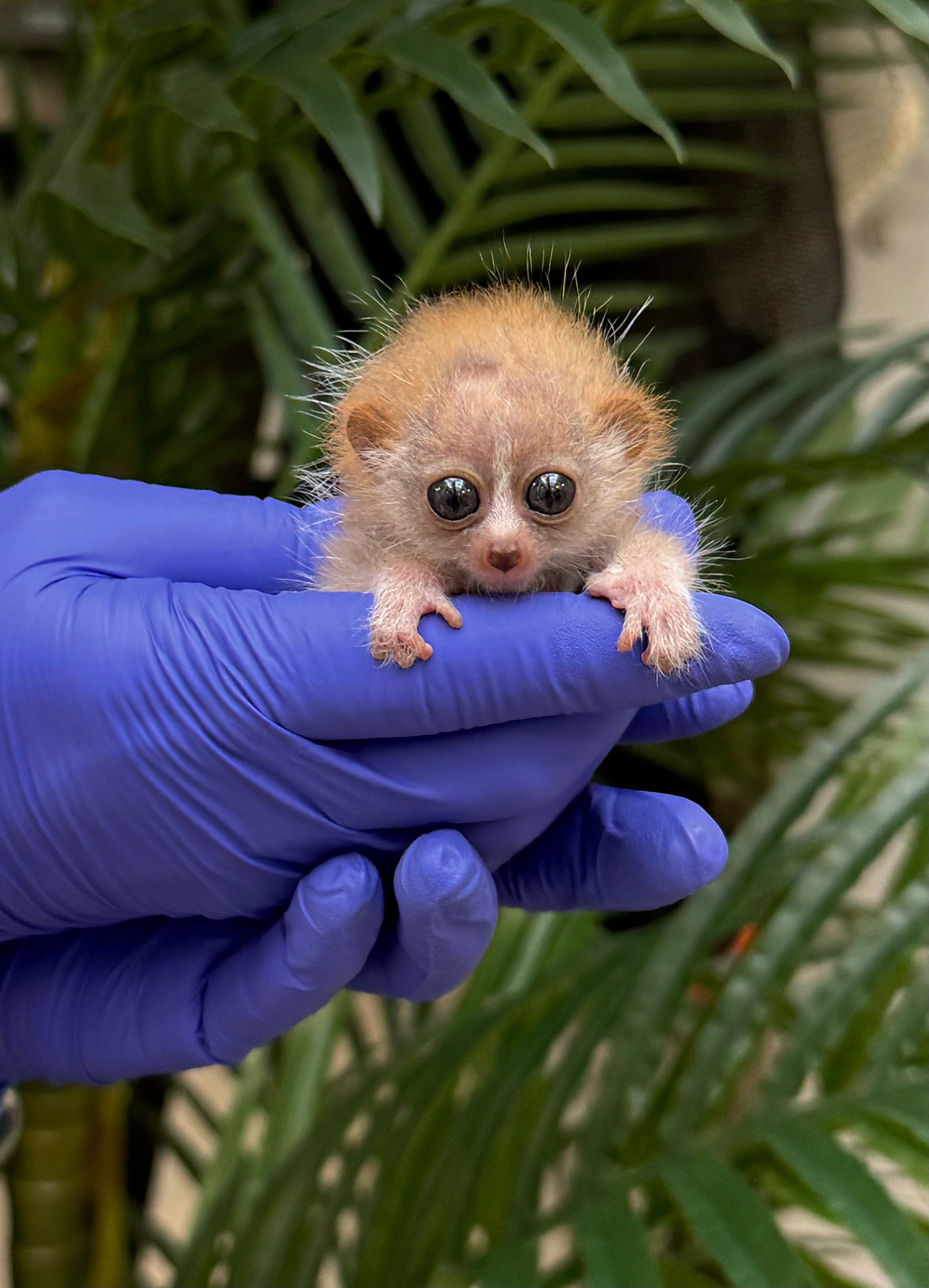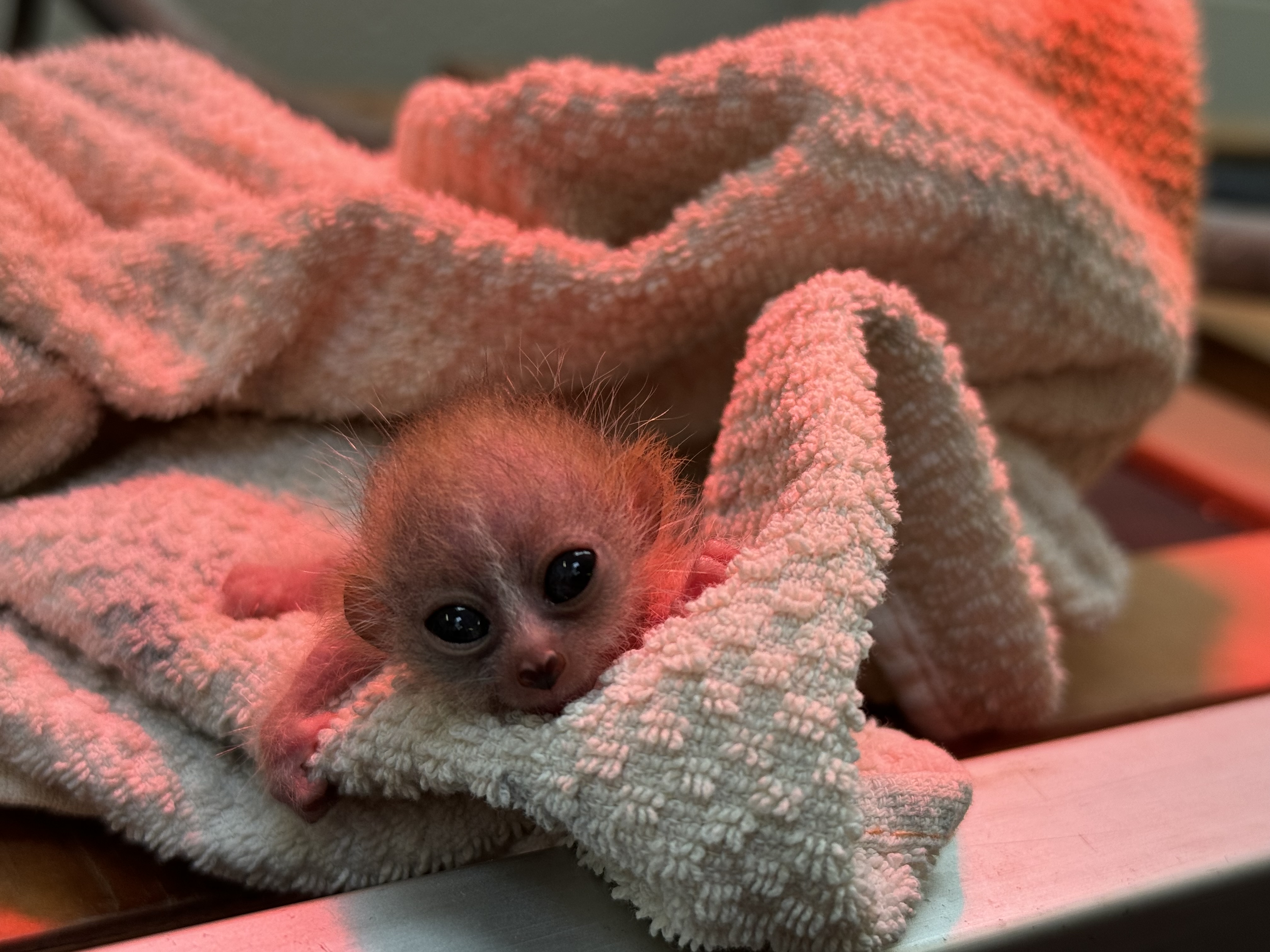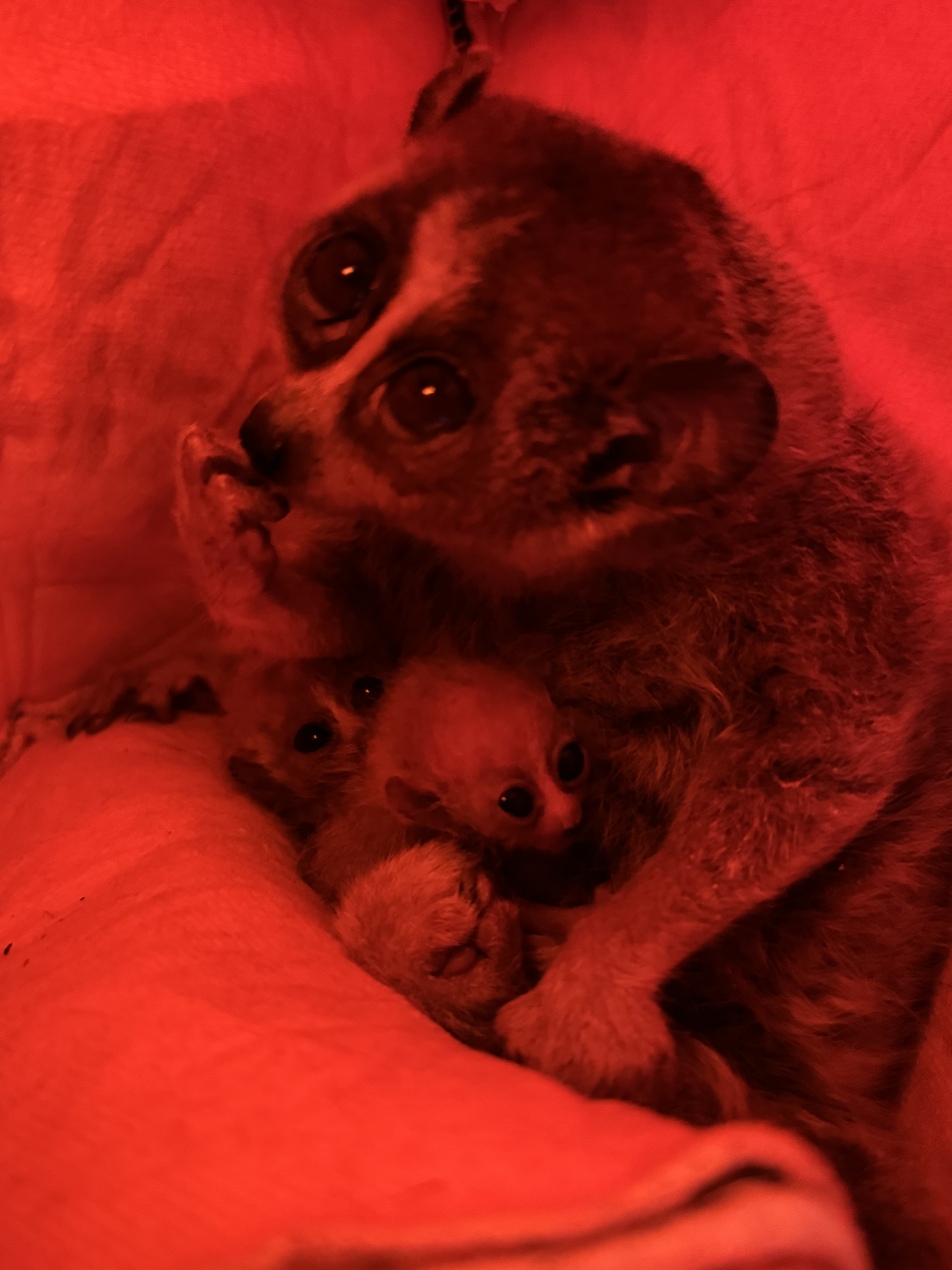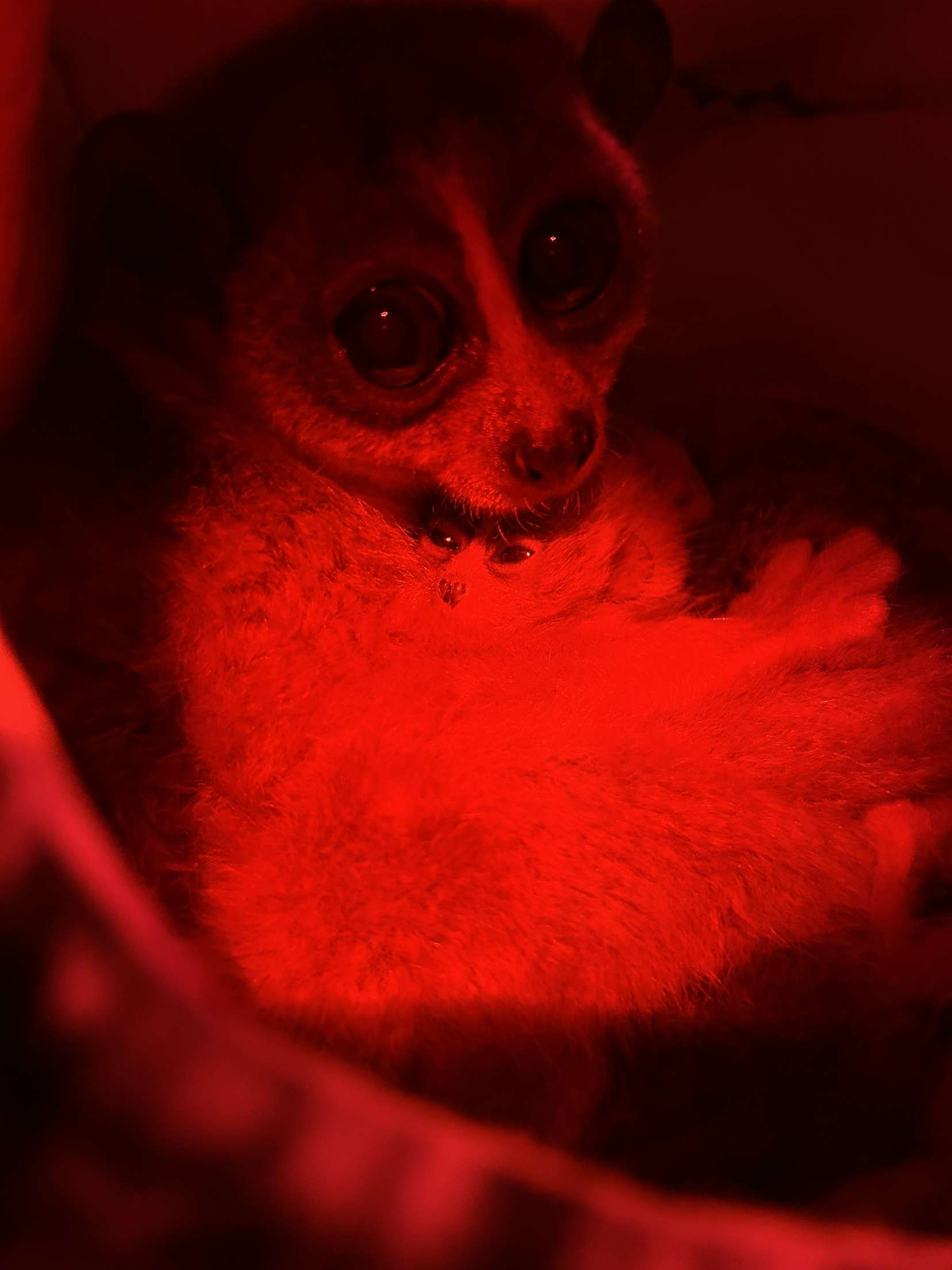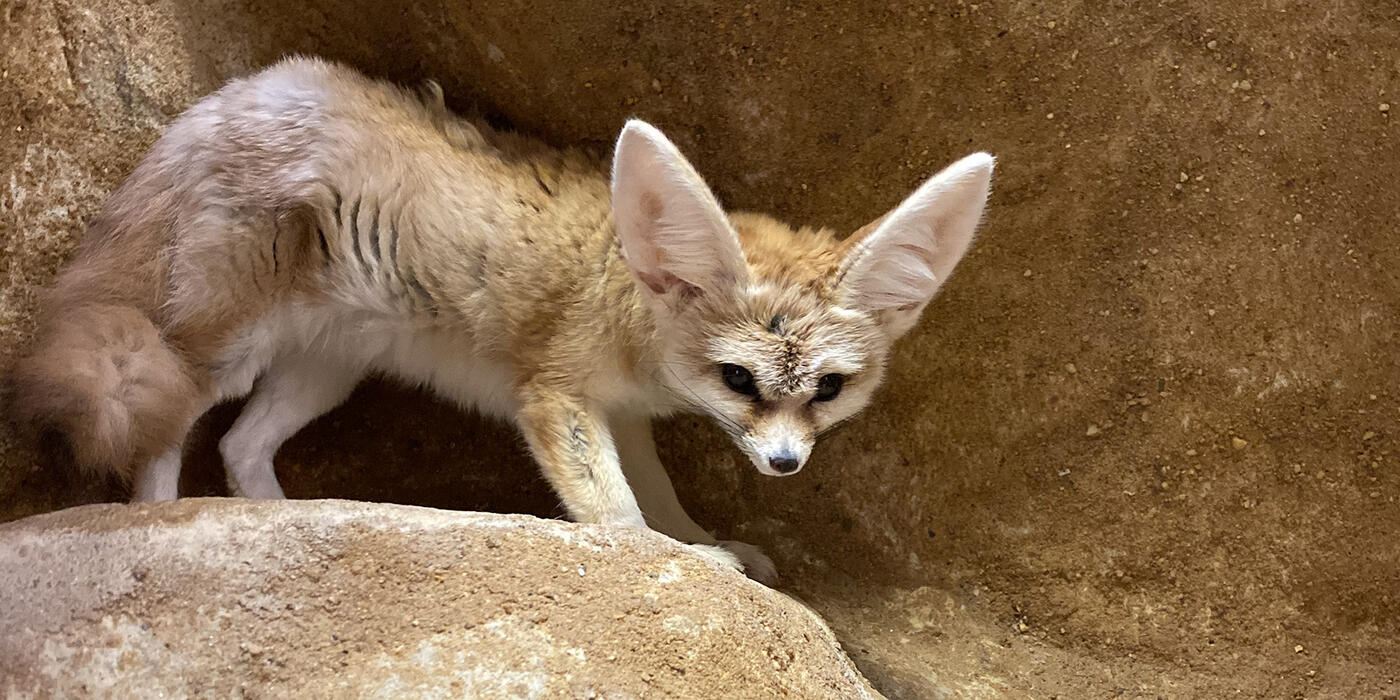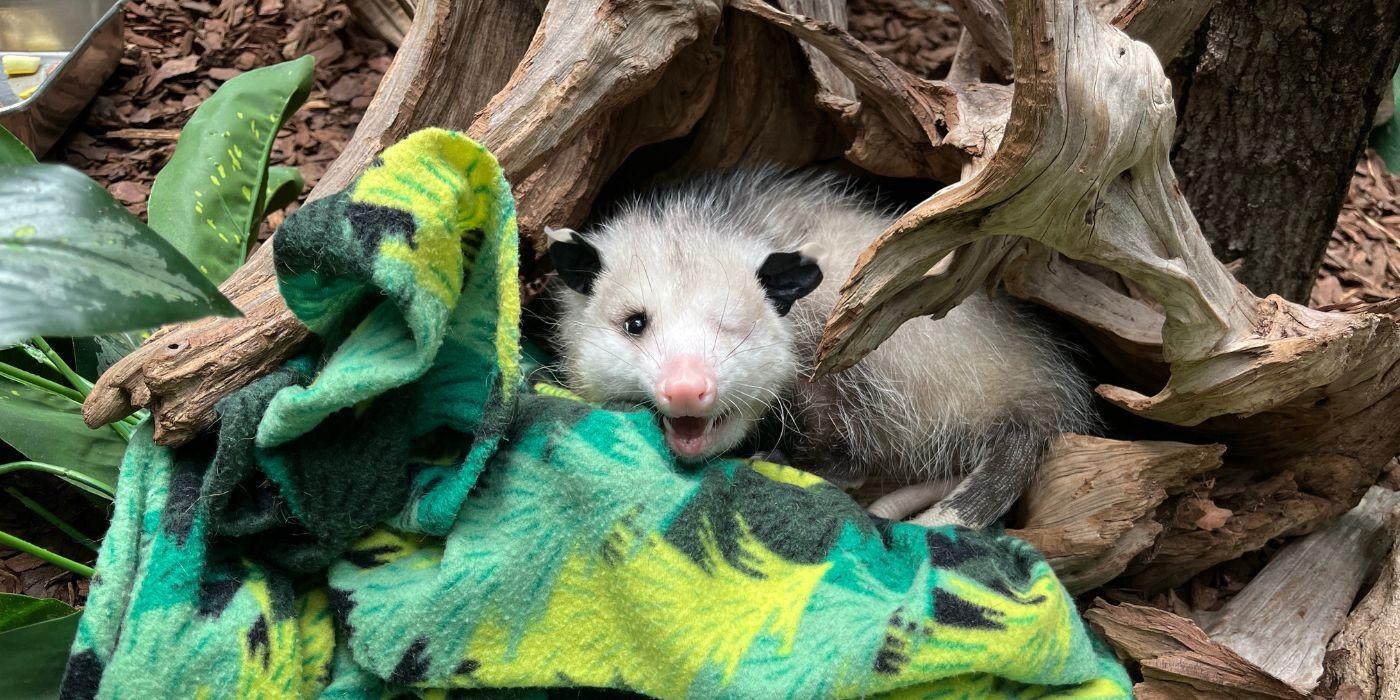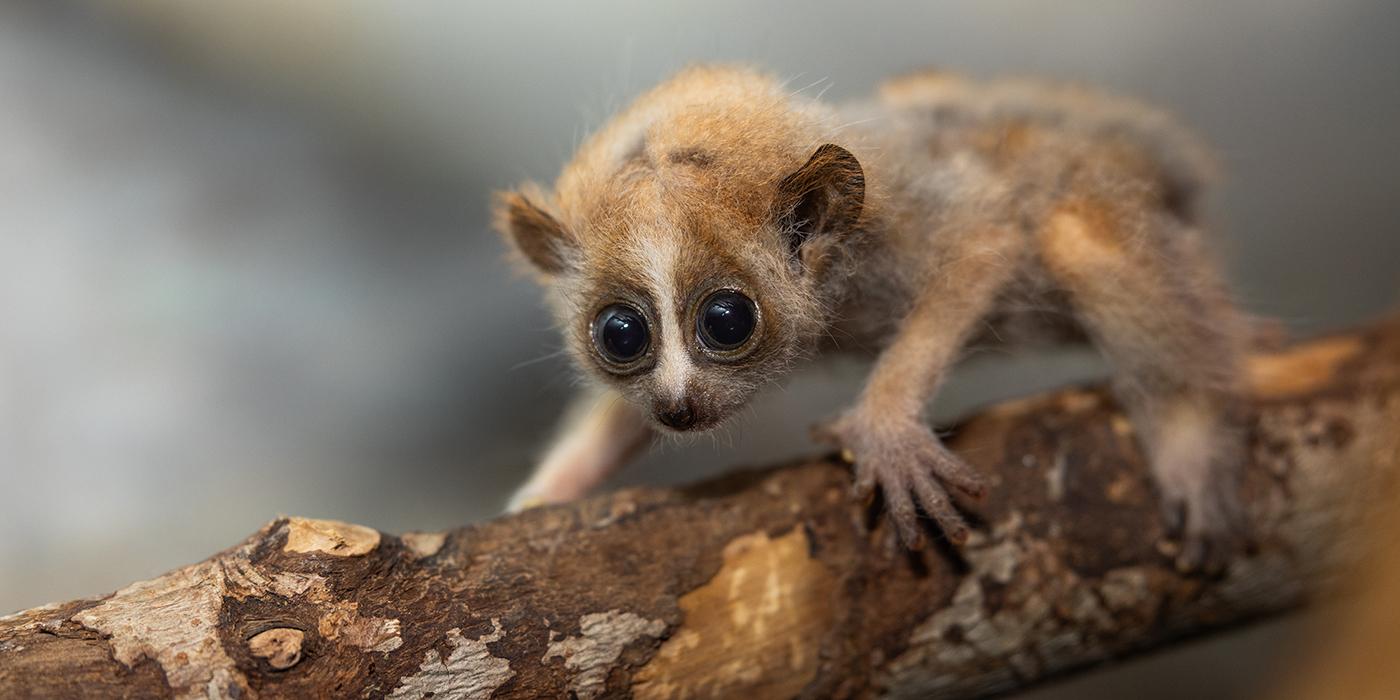Pygmy Slow Lorises Are Born at Smithsonian’s National Zoo and Conservation Biology Institute
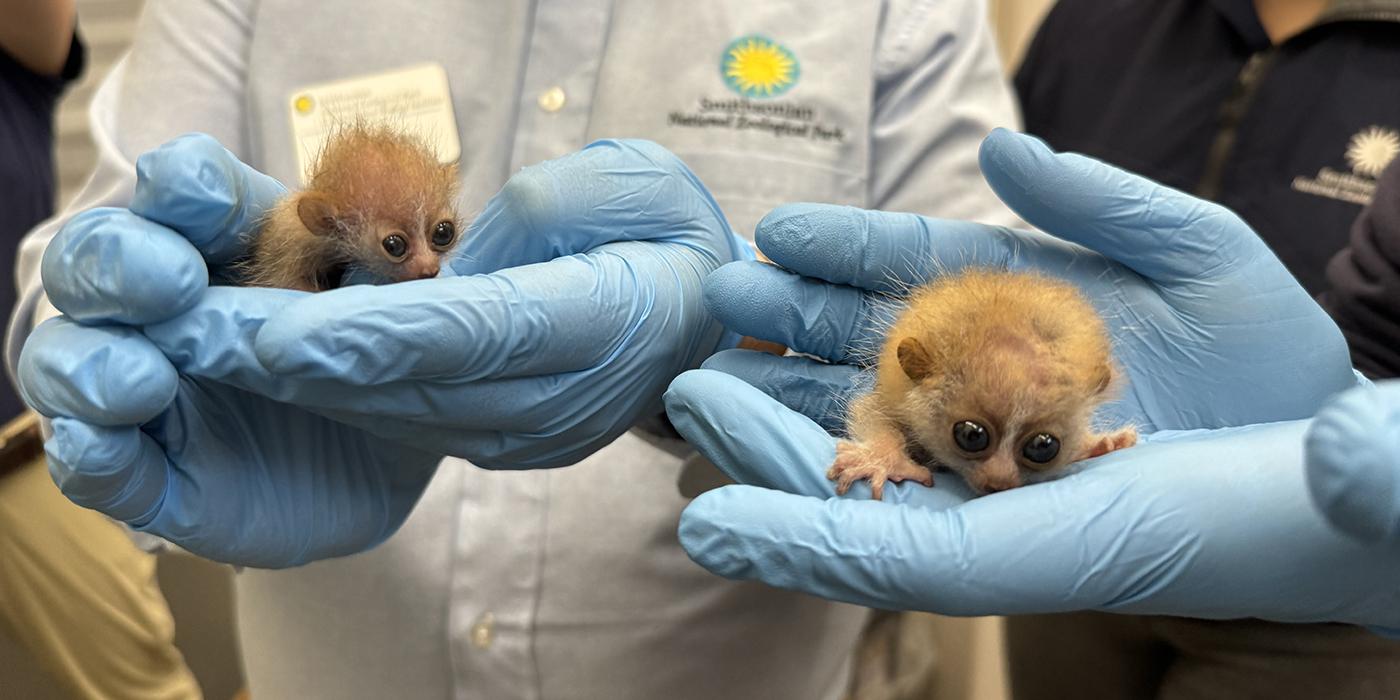
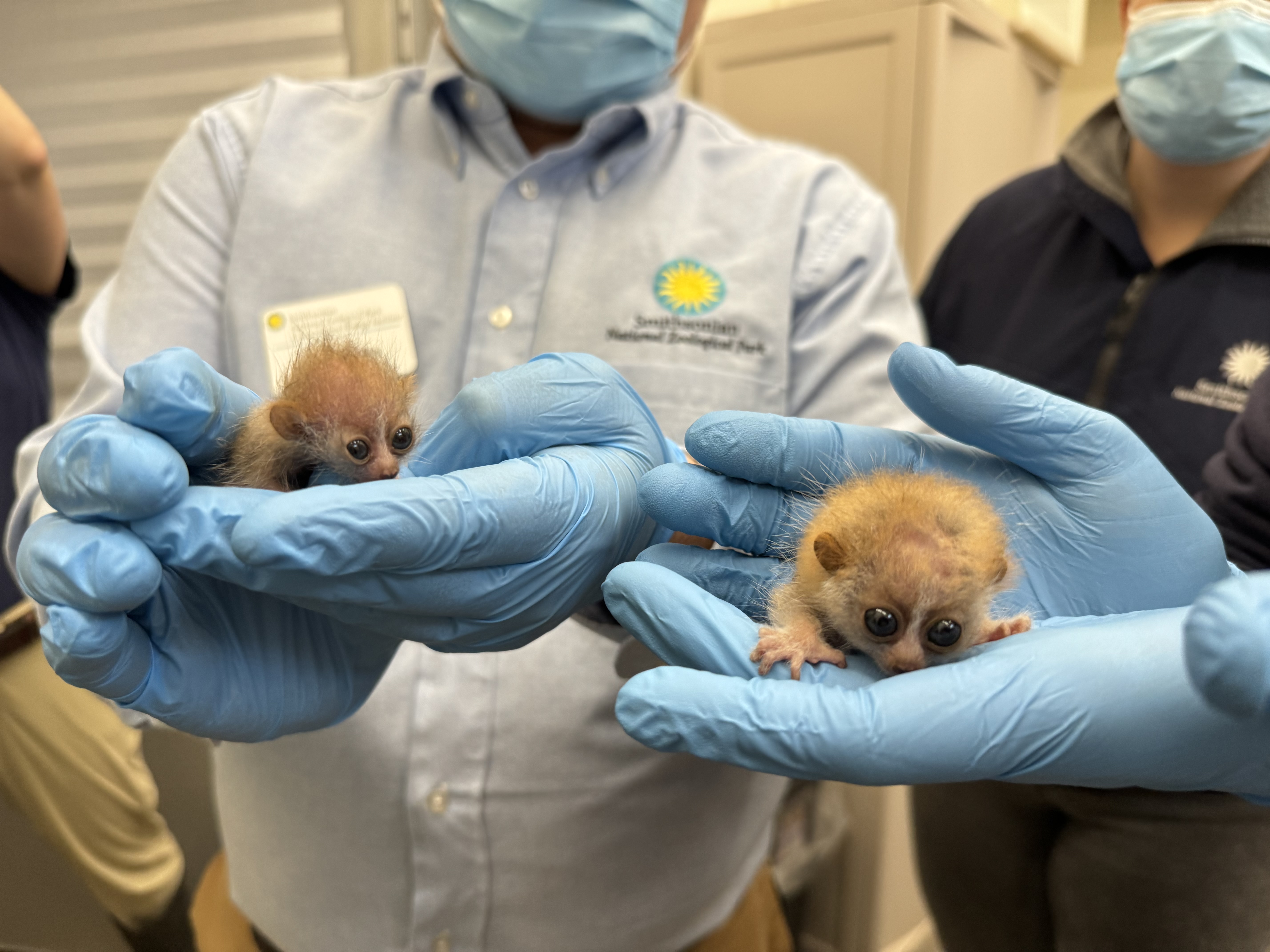
Caption: Small Mammal House keepers cradle two pygmy slow loris babies in their hands, born March 21, 2024. They are the first of their endangered species born at the Zoo. Credit: Kara Ingraham, Smithsonian's National Zoo and Conservation Biology Institute.
NOTE: Additional photos are available for download at the bottom of this page.
For the first time, the Smithsonian’s National Zoo and Conservation Biology Institute (NZCBI) is celebrating the birth of two pygmy slow lorises, an endangered species. Small Mammal House keepers reported for duty the morning of March 21 and observed that 3-year-old mother Naga had given birth overnight and was caring for two infants. She and the babies’ 2-year-old father, Pabu, received a recommendation to breed from the Association of Zoos and Aquariums’ Species Survival Plan (SSP). These babies are the first offspring for both parents. Keepers have observed Naga carrying, grooming and nursing the babies, which appear to be healthy and strong. Animal care staff will determine the babies’ sexes at their first vet exam, which will take place in a few months. The family is on view at the Small Mammal House, and keepers say the babies are most active in the late morning and early afternoon.
Naga and Pabu arrived at NZCBI in August 2022 from the Brookfield Zoo in Illinois and Little Rock Zoo in Arkansas, respectively. SSP scientists determine which animals to breed by considering their genetic makeup, health and temperament, among other factors. According to keepers, Naga’s personality is calm and sweet, though she tends to spook easily. She takes her time when exploring her exhibit and rests often. Pabu, on the other hand, seems to be more high energy. He is inquisitive and always the first to approach keepers and participate in training sessions and feedings. Although pygmy slow lorises reach sexual maturity around 9 months of age for females and 1.5 years of age for males, often they do not successfully reproduce until 2 to 3 years of age. Naga and Pabu’s “howdy” introductions took place in September 2023—about a year after they arrived—and the pair bred soon after meeting. This species’ gestation is about six months.
Pygmy slow loris mothers are the primary caregivers of their offspring. In the wild and in zoos, fathers occasionally interact with offspring, depending on their personality and past experience with babies. Pabu has proved to be an attentive and patient father. Keepers have observed him grooming his family and caring for the babies when Naga leaves the nest to forage for food. Visitors may see the babies clinging to Naga as she moves around the exhibit. On occasion, she will leave the babies in their nest or on a branch while she eats or explores. Keepers look forward to watching the babies independently explore their exhibit and play with enrichment items.
Slow lorises are the only known venomous primates. They produce a venom in their brachial glands in their upper arm. Combined with enzymes in their saliva, these primates can produce a painful bite, allergic reaction and a slow-healing wound. Wild slow lorises do not use it against predators because the venom is not fast-acting. Instead, the venom is used in territorial disputes with other slow lorises. They also groom themselves with the venom to ward off parasites and warn predators to stay away.
Native to Cambodia, Lao People’s Democratic Republic and Vietnam, pygmy slow lorises live in mixed deciduous and evergreen forests. The greatest threats facing this species are deforestation and the illegal pet trade. Much of their habitat has been cleared for the logging industry; they spend the majority of their time from 10 to 40 feet up in the forest canopy. The International Union for Conservation of Nature considers pygmy slow lorises endangered.
# # #
Photo caption: The Smithsonian’s National Zoo and Conservation Biology Institute welcomed two pygmy slow lorises babies March 21 to mother Naga and father Pabu in the Small Mammal House. Photo credit: Kara Ingraham, Smithsonian’s National Zoo and Conservation Biology Institute
Related Species:
Image Gallery
